Welcome to Oslo, the vibrant capital of Norway, blending seemlessly modernity, history and natural beauty. Whether you are in Oslo for a short trip or on your way to see more of Norway’s stunning beauty, I highly recommend taking the time, even just one day, to explore this fantastic Scandinavian city.
I went to Norway not so long ago on a road trip through the fjord region and stopped by Oslo for one day. This clean, green and vibrant city immediately stole my heart and directly went up the list of cities were I absolutely see myself living in.
One day is too short to see everything in Oslo, but it is already good enough to explore parts of the city and its world-class museums, captivating architecture and cozy cafes.
In this one day itinerary, I’ll take you through the best things you can see and do if you only have one day to spend in Oslo.
It is mostly a day of walking around and stopping by some landmarks, that you can choose to properly visit or not, depending on the time that you have and your interests.
- One Day itinerary in Oslo: Best things to see and do
- Explore the Royal Palace Park
- Visit the Historical Museum
- Walk along the famous Karl Johans gate
- Eat a cinnamon roll or cardamom bun
- Stop by Stortorvet and Oslo Cathedral
- Check out the Barcode buildings and Akrobaten bridge
- Visit the Munch Museum
- Go up the Opera’s rooftop
- Explore the Akershus Fortress
- Admire the architecture in Aker Brygge and Tjuvholmen
- Time to spare?
- One Day in Oslo – Practical info
One Day itinerary in Oslo: Best things to see and do
Explore the Royal Palace Park

This beautiful park surrounding the royal palace is perfect to start your day by walking around nature. It is located at the end of the city’s most famous street, Karl Johans gate, and is a perfect introduction to the lively city that is Oslo.
The Royal Palace is where the King and Queen live and work. You can visit the Royal Palace if you want, but note that it is open to visitors only during the summer months (late June to middle of August), and it is recommended to book tickets in advance if you want to have a visit in English. If you want more information, check out the Royal Palace website.
Visit the Historical Museum
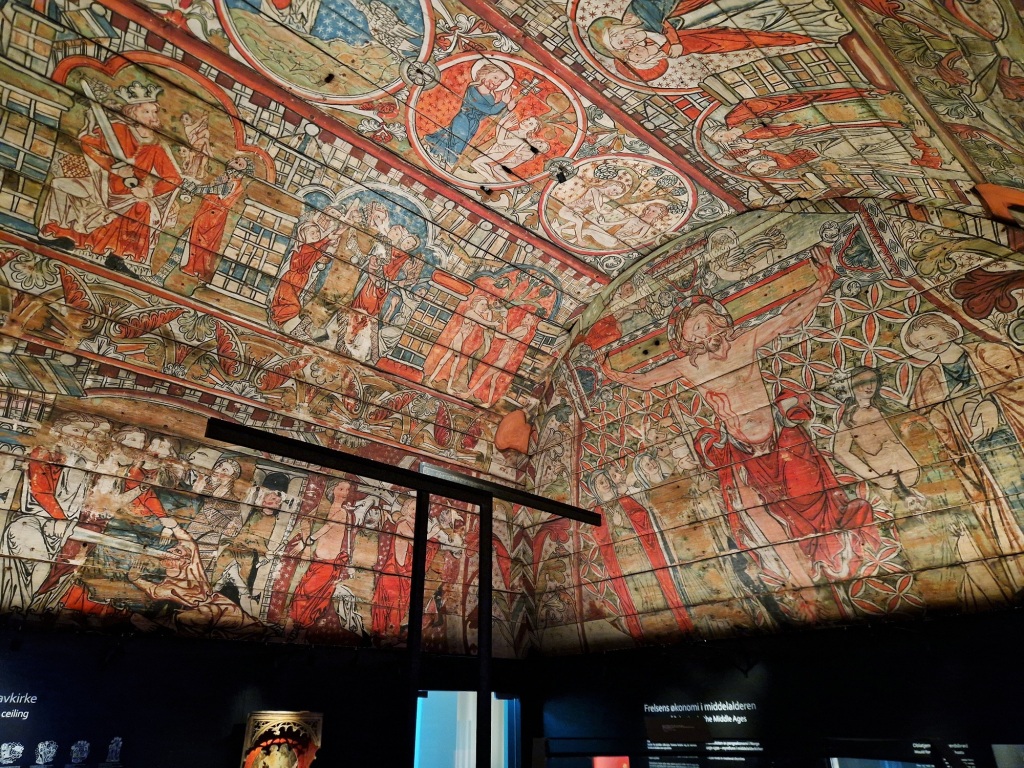
If you have time during your day exploring Oslo, I highly recommend visiting the Historical Museum, where you’ll find a detailed account of Norwegian history along with many historical items from the Viking Age.
The Vikingr exhibit has lots of interesting items, but you should absolutely not miss the ground floor exhibit where you can see what remains of some of Norway’s stave churches.
The museum is open everyday, except on Mondays, from 10 am to 5 pm, and the entrance ticket for adults is 140 NOK and free for children under 18. You’ll find more information on the Historical Museum website.
Walk along the famous Karl Johans gate
Karl Johans gate is the main commercial street in Oslo, going from the Royal Palace all the way to Oslo central station, passing by countless shops, but also the Parliament building.
This is a great area to witness the lively atmosphere of Oslo and stop by a café, a restaurant or a shop.
If you are following the walking itinerary, just take a leisurely stroll along this avenue, stopping here and there if you wish!
Eat a cinnamon roll or cardamom bun
Norway is well-known for its delicious bakeries and pastries, so while you walk around the centre of Oslo, you should definitely stop by a bakeri and indulge in a delicious cinnamon roll (”kanelboller”) or cardamom bun (”kardemommeknuter”).
Stop by Stortorvet and Oslo Cathedral
A small detour from Karl Johans Gate, you’ll find this cute square that has a flower market in summer and spring. It’s perfect for a nice break from the shopping area too!
Right in front of it, you’ll also see Oslo Cathedral (”domkirke”) with a beautiful baroque interior. You can also climb up the tower to get a stunning view over the city.
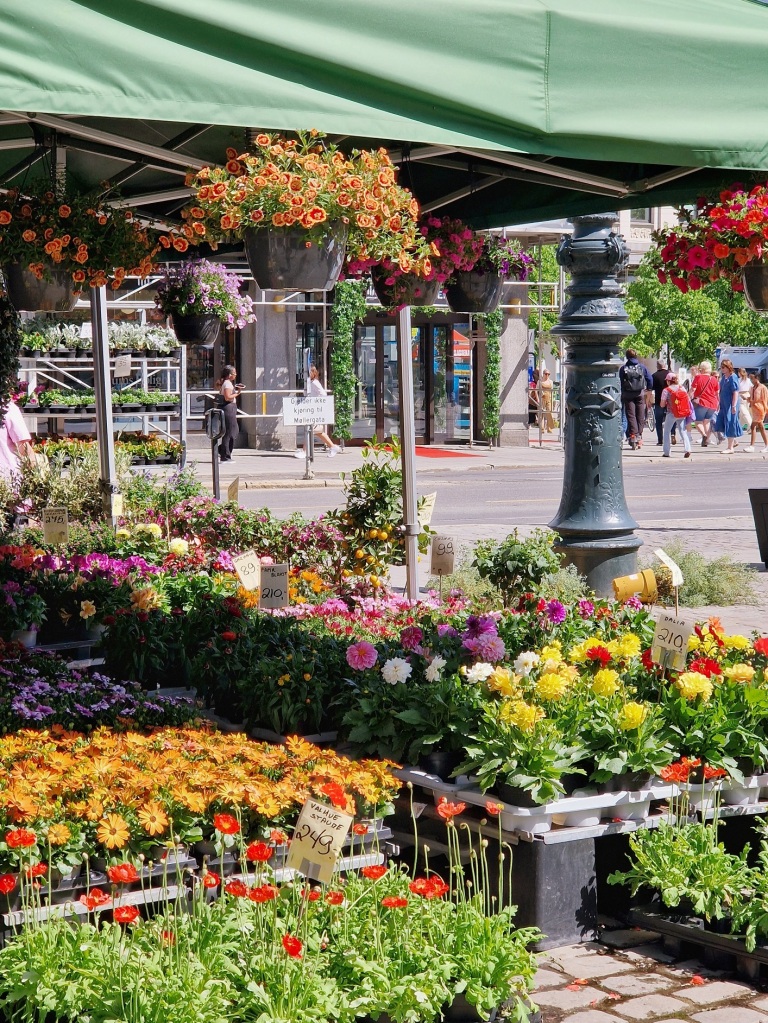
Check out the Barcode buildings and Akrobaten bridge
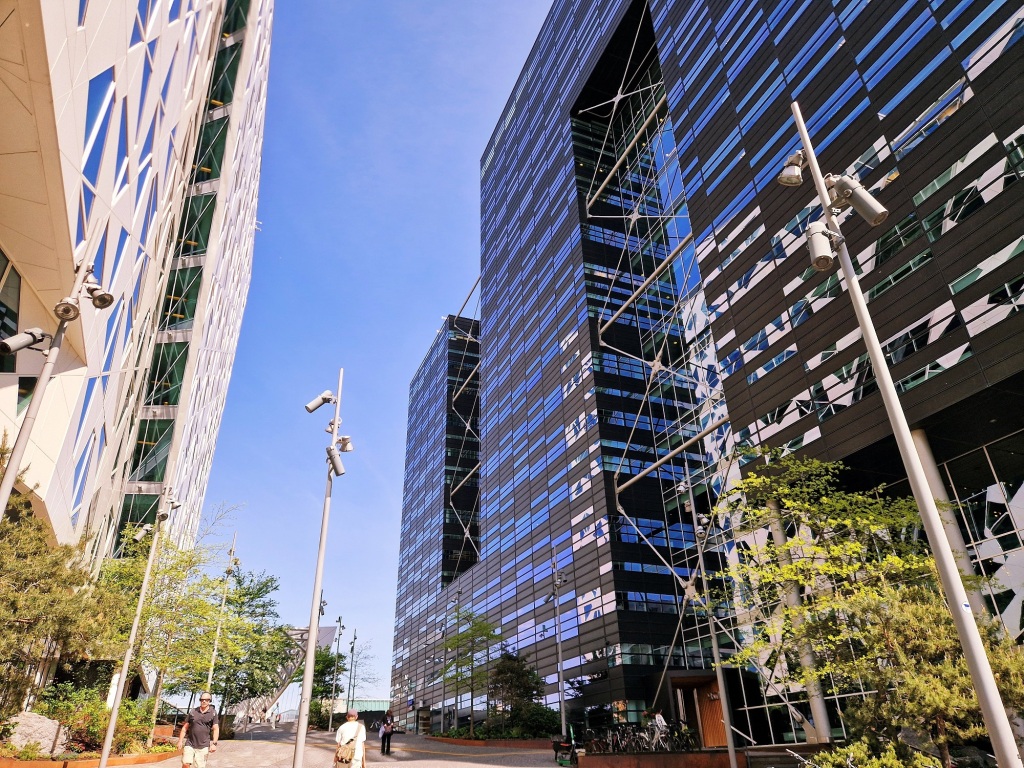
At the far end of Karl Johans gate, once you reach the central station, continue walking towards the Bjørvika district. This is an old industrial area that is slowly transforming into a modern neighbourhood with office buildings but also a lively social life.
You can check out the well-known “Barcode” buildings and the very modern Akrobaten bridge, before heading towards the bay, where people sunbathe on sunny days.
Visit the Munch Museum
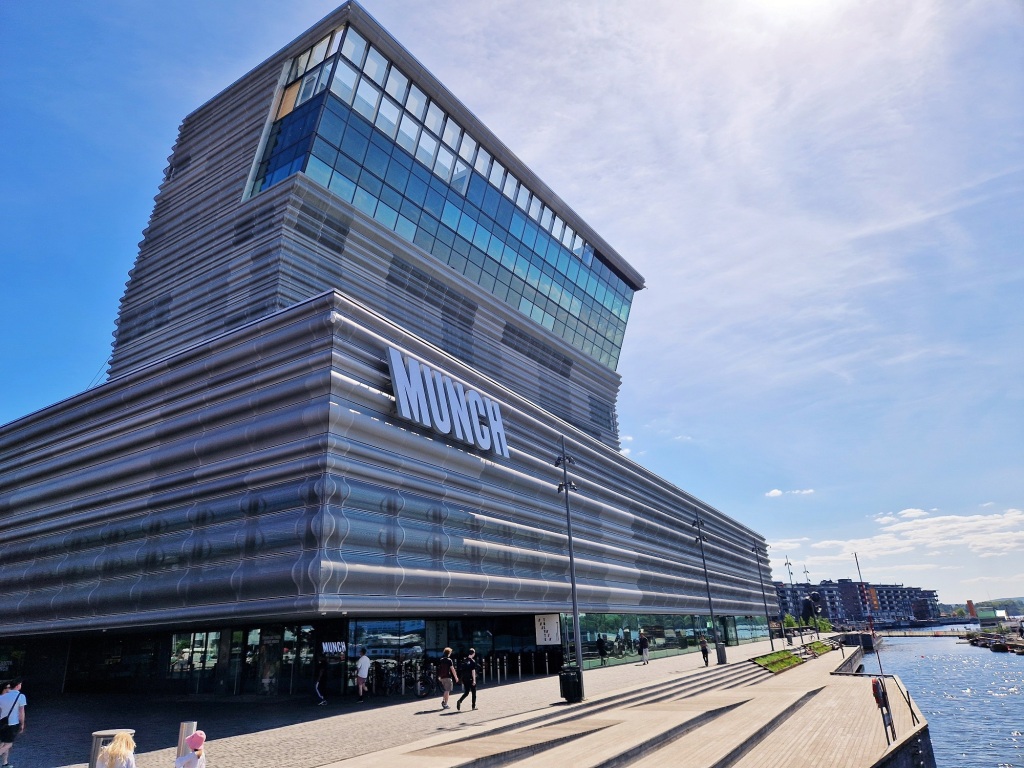
This tower-shaped museum has become one of Oslo’s main landmarks. You can either pass by it and admire its architecture, or visit it, though this might take you a few hours – so check if you have the time. For example, we visited the Historic Museum instead, but you can choose.
With 13 floors, this museum gives all the place they deserve to the artworks of the world-famous Norwegian painter Edvard Munch, making it one of the world’s biggest single-artist museums.
Go up the Opera’s rooftop
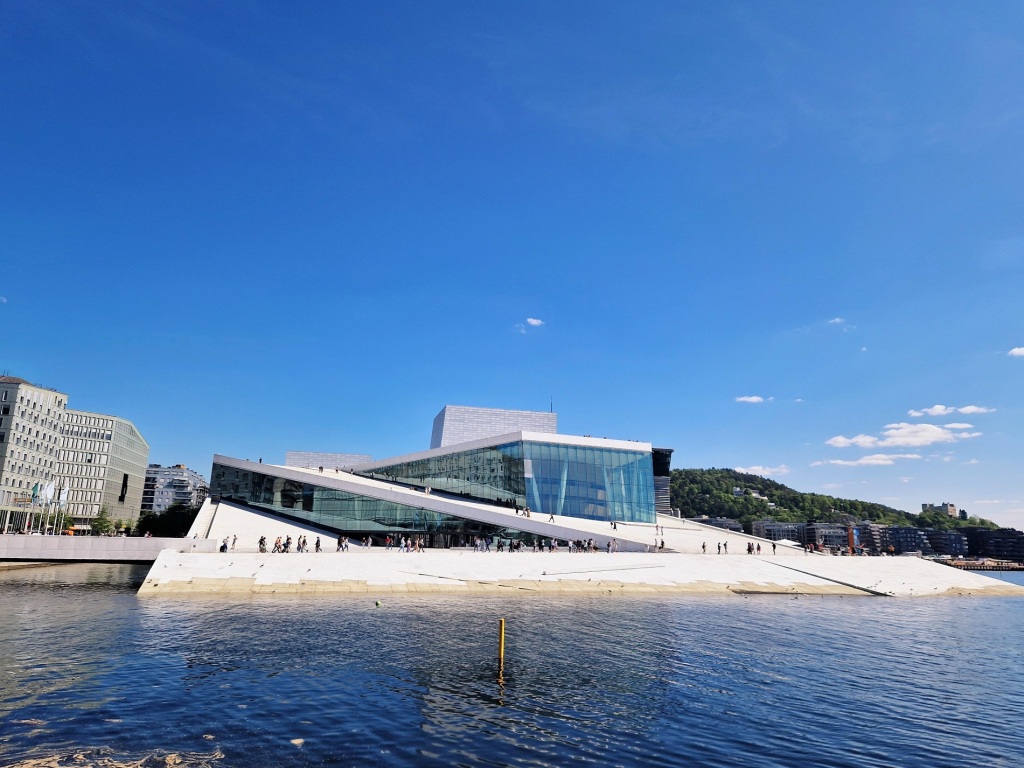
After you checked out the Munch Museum, a visit of Oslo would not be complete without going up the Opera’s rooftop. In the line of many other buildings in Oslo, the Opera House has a very interesting architecture and is partly under water.
Its roof is like a white slope that you can go up on and checkout the surrounding views over the bay. It is definitely a must-do!
Explore the Akershus Fortress
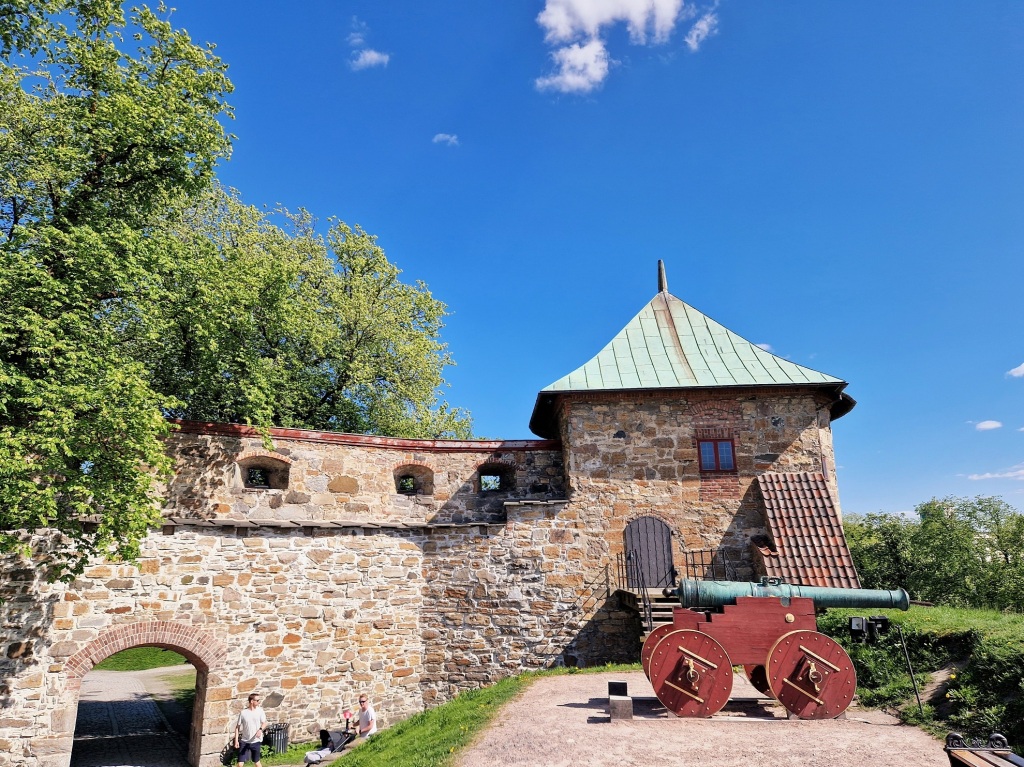
Located a bit further down a sort of peninsula, the Akershus Fortress is the perfect place to dive deeper into Norway’s history. The fortress was built in the late 13th century and modernised throughout the ages.
You can visit the castle (there are guided tours in the summer months) or just walk around the area, checking out the buildings from outside and the nice views.
Admire the architecture in Aker Brygge and Tjuvholmen
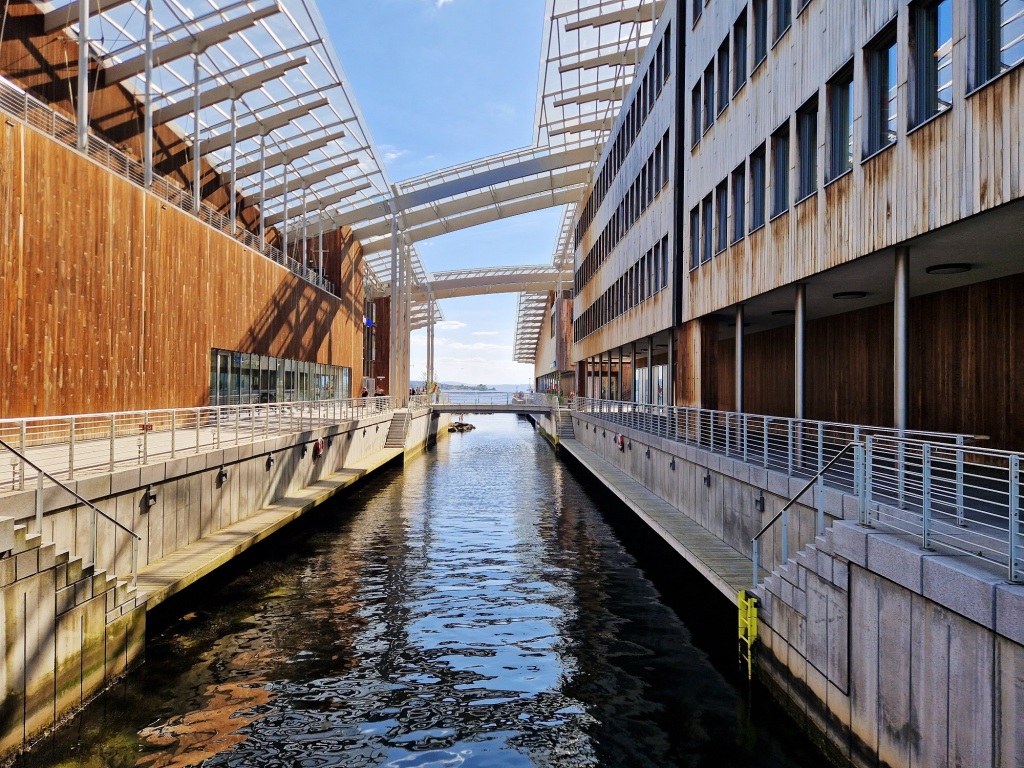
From the Akershus Fortress, if you keep walking along the harbour, you’ll end up in Aker Brygge, a strip of restaurants along a boardwalk, where you’ll also find a shopping centre and the Nobel Peace Center.
If you keep walking along the boardwalk, you’ll cross several bridges until you reach the Astrup Fearnley Museum of Modern Art, with its very interesting architecture by the Italian Renzo Piano.
Time to spare?
This itinerary can take you any time from a few hours to a whole day, depending on where and for how long you stop. It may also be that you have a bit more time in Oslo than anticipated, so here are some ideas of things to do in Oslo if you have more time:
- Try a floating sauna (not too far from the Opera house)
- Explore the Vigeland park and its impressive sculptures
- Visit the Norwegian Museum of Cultural History
- Take a boat tour in the Oslofjord
One Day in Oslo – Practical info

How long should you stay in Oslo?
In 1 day in Oslo you will only see the main landmarks in the city centre and maybe manage to visit a museum, so while it is sometimes all that we have, I think one day is not really enough to properly visit Oslo.
I would recommend instead staying for 2-3 days to get a better idea of the city’s atmosphere and have more time to visit museums and explore areas that are a bit further away from the centre.
However, when we only have a short amount of time on our hands, I always recommend trying to make the most of it, so I still highly encourage you to visit Oslo, even for a short amount of time!
What is the best time of the year to visit Oslo?
I would say that Spring/Summer is the best time of the year to visit Oslo, and Norway in general to avoid potential bad weather. However, I am sure Oslo is a wonderful city to visit even in the colder months!
Do you need a car to visit Oslo?
Unless you want to leave Oslo to go on a roadtrip afterwards, you absolutely don’t need a car. Oslo is very walkable and its centre is not that big.
To see other landmarks located a bit outside the city centre, you’ll have plenty of buses that take you there, and the public transportation system is very efficient.
Is Oslo a safe city?
I definitely felt safe in Oslo and Norwegians seem to be very respectful and friendly. However, just like in all big cities and whenever you visit some place new, be mindful of your surroundings and stay safe. This is especially true in more touristic areas.
Where to stay in Oslo?
Downtown Oslo being quite small and walkable, I would recommend just staying around the central area, from around the Royal Park to the Central Station. We stayed in Majorstua and loved it!



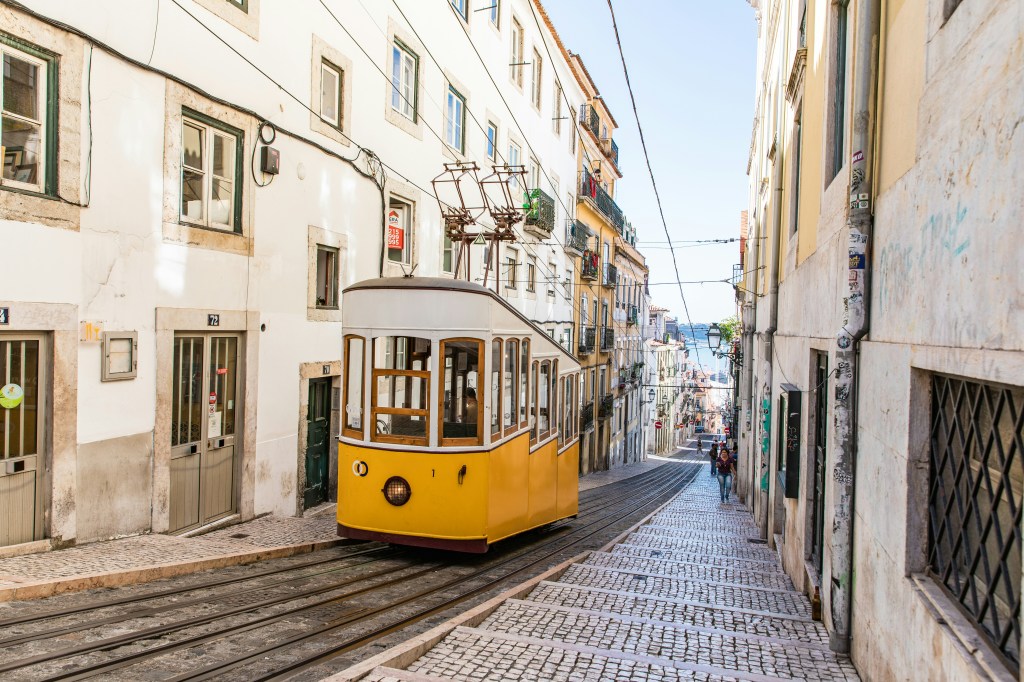


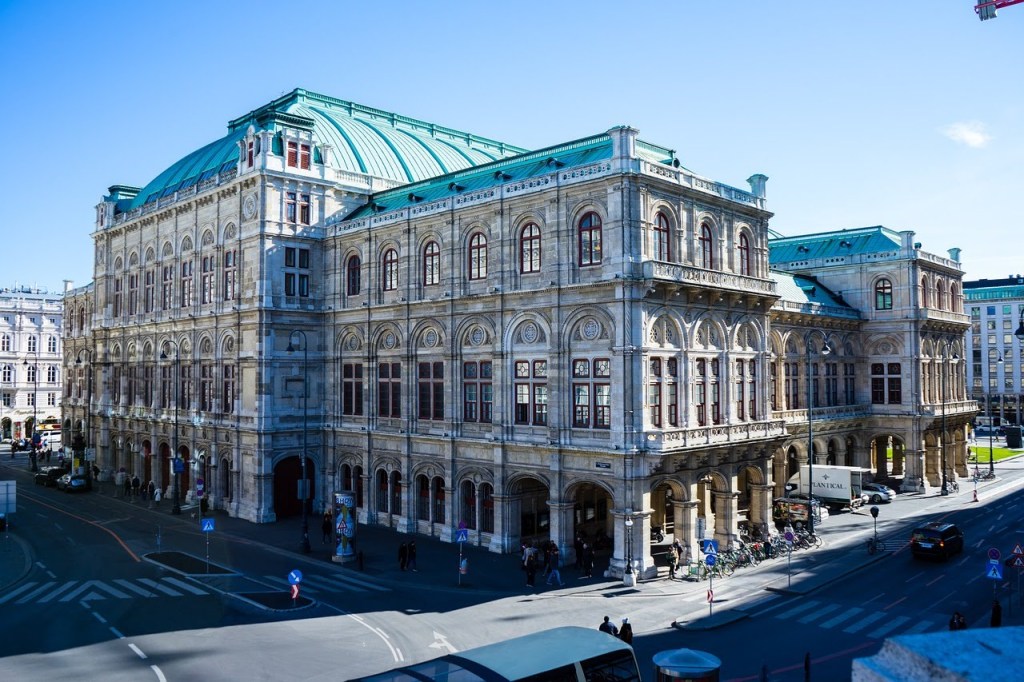
Leave a comment